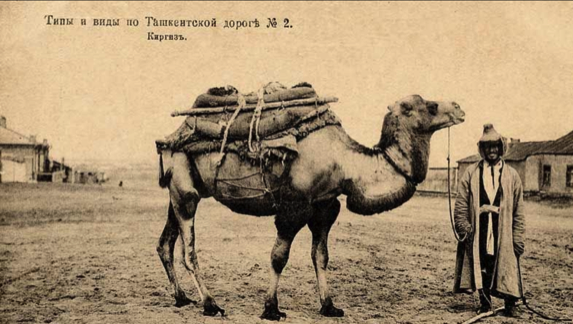Few place names in the world conjure more intriguing, mysterious, romantic and exotic ideations than that of the "Silk Road." The term was first coined in 1877 by German geographer, traveler and historian Ferdinand von Richtofen in describing the important ancient trade routes running 4,000 miles between China's Xian province in the east to Europe in the west. The use of the singular "Road" however is a misnomer since there were many routes across Central Asia that caravans had traveled on for centuries.
In 130 B.C. China's Han Dynasty formally opened the trade route from China to the west creating the Silk Route that conveyed goods in both directions. This after the return of Zhang Qian the leader of a group of explorers who reported on what they discovered in Central Asia. Included in their discoveries were larger more powerful horses than the Chinese had at the time. As the leader of the expedition, Zhang Qian has been credited as the "Father of the Silk Route." For 600 years the route was a viable and important conduit before its demise when China was boycotted by the Ottoman Empire in A.D. 1453.
The route's 4,000-mile length evolved into a well-organized system for camel caravans along its entirety while most travelers never crossed from east to west but rather operated locally between given points before returning towards home. Villages and towns were constructed along the route that included Caravanserai (Inns) that were spaced a day's march apart allowing for travelers to trade, seek rest and food along with safe shelter and warehouses in which to store their goods from bandits. At the route's termination in the Eastern Mediterranean, goods were moved on by sea to Rome and distributed throughout Europe.
During its 600 years of operation, an extensive list of goods traversed the routes. Among items heading west were spices, incense, paper, gunpowder, gems, people, slaves, tea, sugar, jade and lacquerware along with animals. Headed eastward to China were Roman glass beads, wool, gold, and silver.
Some of the items imported from China were both powerful and transformative in nature. Paper, unknown in Europe, was instrumental in the development of Guttenberg's printing press and the dissemination of the printed word. The newly printed books now readily available in turn created the need for many to learn to read, thus introducing education as an important undertaking.
Gunpowder transformed the very nature of weapons and war while spices brought about new culinary experiences to the continent. Silk in all its forms thought to be derived from trees was so desirable for Imperial Romans that the volume of silver and gold sent in payment to China caused an economic crisis in the Empire.
Along with the caravan's commercial goods a myriad of cultures, beliefs, religions, innovations and ideas whose collective influences changed the very course of world history also went along for the ride.
As with any long-distance travel, the portage of diseases was ever present and most profound among them was the transport of the Black Death from Central Asia and China to Europe in the 14th century. After first arriving in Europe around 1346 it spread rapidly so that by 1351 it had killed around one-third of the population. Its combined death toll spread across the world eventually killing an estimated 200 million people. Out of this in turn came about many other changes. With a significantly reduced labor pool in Europe, survivors gained an increase in earnings through higher wages which in turn meant a greater distribution of wealth amongst a smaller population.
The best-known traveler of the Silk Road, today honored in the ad nauseum swimming pool game, was Venetian Marco Polo who in fact may have never traveled there at all but nevertheless did write about his exploits. In his 13th century book il Millione (the million) he describes his travels across Asia between 1271 and 1295. Many scholars today believe that he in fact may have only been repeating stories which he had heard and not actually undertaken the travels. And contrary to widespread belief, he did not bring pasta and spaghetti back from the Chinese to Italy.
Another explorer who did actually travel around the world and along the Silk Roads was Moroccan Ibn Battuta. He recorded his 1325-1354 exploits at the behest of the king after he returned to Morocco creating a travel classic little known in the west.
Importantly, too, in trade and commerce was the Incense Route that ran north to south controlled by the Arabs from Arabia Felix (Southern Arabia) and East Africa from where spices, gold, ivory, pearls, precious stones, and textiles imported from the region, India and the Far East were transported to Europe and beyond.

A short history of the Silk Route